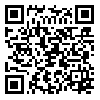Volume 79, Issue 10 (January 2022)
Tehran Univ Med J 2022, 79(10): 773-779 |
Back to browse issues page
Download citation:
BibTeX | RIS | EndNote | Medlars | ProCite | Reference Manager | RefWorks
Send citation to:



BibTeX | RIS | EndNote | Medlars | ProCite | Reference Manager | RefWorks
Send citation to:
Hatami V, Tavan H, Hatami S, Delpisheh A, Mamizadeh M. Comparison of the thickening of donor skin graft with conventional method (using vaseline gas) and platelet-rich plasma topical application. Tehran Univ Med J 2022; 79 (10) :773-779
URL: http://tumj.tums.ac.ir/article-1-11468-en.html
URL: http://tumj.tums.ac.ir/article-1-11468-en.html
1- Student Research Committee, School of Medicine, Ilam University of Medical Sciences, Ilam, Iran.
2- Department of Nursing, Clinical Research Development Unit, Shahid Mostafa Khomeini Hospital, School of Nursing and Midwifery, Ilam University of Medical Sciences, Ilam, Iran.
3- Department of Plastic & Reconstructive Surgery, School of Medicine, Ilam University of Medical Sciences, Ilam, Iran.
4- Department of Epidemiology, Psychosocial Injuries Research Center, School of Medicine, Ilam University of Medical Sciences, Ilam, Iran.
5- Department of Dermatology, School of Medicine, Ilam University of Medical Sciences, Ilam, Iran.
2- Department of Nursing, Clinical Research Development Unit, Shahid Mostafa Khomeini Hospital, School of Nursing and Midwifery, Ilam University of Medical Sciences, Ilam, Iran.
3- Department of Plastic & Reconstructive Surgery, School of Medicine, Ilam University of Medical Sciences, Ilam, Iran.
4- Department of Epidemiology, Psychosocial Injuries Research Center, School of Medicine, Ilam University of Medical Sciences, Ilam, Iran.
5- Department of Dermatology, School of Medicine, Ilam University of Medical Sciences, Ilam, Iran.
Abstract: (1102 Views)
Background: Healing involves complex processes that are not yet fully known. The wound healing process consists of three stages. In all these stages, normal wound healing requires platelet activation, release of cytokines and growth hormones, and chemotaxis and cell differentiation. Platelets play a key role in homeostasis and wound healing and growth factor production of more than 30 carried out by them. Platelets regulate the healing process with their chemotactic effect. Antilogous PRP platelet count in about 3 to 5 times increase and consequently also increases the number of growth factors, for this reason, they are being used in surgical procedures and clinical therapy.
Methods: At Ilam Medical Center in Imam Khomeini Hospital, 20 patients with two similar donor graft sites were gradually selected to participate in a clinical trial from January to March 2017. The two regions have the same skin graft patients, an area of Honor conventional and other areas with the topical administration of platelet-rich plasma That immediately after surgery and in the days after the fifth and eleventh, eightieth and after washing the wound with a topical serum Physiology rubbed on the wound and thus treated The rate of wound healing clinically and using X-ray photo-checked and compared.
Methods: At Ilam Medical Center in Imam Khomeini Hospital, 20 patients with two similar donor graft sites were gradually selected to participate in a clinical trial from January to March 2017. The two regions have the same skin graft patients, an area of Honor conventional and other areas with the topical administration of platelet-rich plasma That immediately after surgery and in the days after the fifth and eleventh, eightieth and after washing the wound with a topical serum Physiology rubbed on the wound and thus treated The rate of wound healing clinically and using X-ray photo-checked and compared.
|
Results: Seven are male and thirteen are female and the age range of patients is between 17 and 67 years. After collecting wound healing times in two groups, we used the means comparison method to evaluate the effect of PRP on wound healing rate and analyzed the results (T-Test). Because the data followed a normal distribution, we used the Independent T-test method, which resulted in 0.416, which was higher than the alpha level equal to 0.05.
Conclusion: In this study, we found that PRP had a positive effect on wound healing time and increased the speed of wound healing. It is suggested that the effect of the PRP method on various organs that have not been tested before, be discussed in future studies. |
Type of Study: Original Article |
| Rights and permissions | |
 |
This work is licensed under a Creative Commons Attribution-NonCommercial 4.0 International License. |





